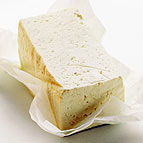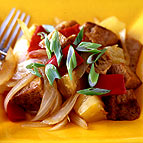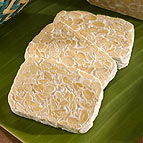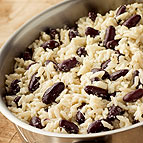Let’s Go Out For ... Vegetarian
Learn the basics of a meatless menu.
Article By: Bruce Weinstein and Mark Scarbrough
If you aren’t a vegetarian, why would you ever want to go to a vegetarian restaurant? Maybe to accompany a meat-avoiding friend? Or maybe you’ve newly committed to a healthier lifestyle?
Or maybe — just maybe — because it can be tasty and fulfilling if you know what to choose from the menu. So, since we’re all in this together, here’s how to roll vegetarian style.
Talking the Talk
- Vegetarian: someone who doesn’t eat meat (including fish and shellfish) but does eat products that come from animals (like milk, cheese, and butter).
- Vegan: someone who doesn’t eat meat or any product that comes from an animal.
- Pescatarian: a vegetarian who eats fish and shellfish.
- Flexitarian: someone who eats more vegetables than meat, who eats many vegetarian (or even vegan) meals, but who also occasionally eats meat, fish, and shellfish.
Where to go
Because Buddhist teachings forbid the consumption of meat, many Asian cultures have embraced vegetarianism. That means you’ll find plenty of vegetarian Chinese, Indian, Thai and Japanese restaurants in large metropolitan areas, and they’ll have more meatless options than their Western counterparts.
Warning: “Vegetarian” doesn’t mean “low in PointsPlus™ values”
Vegetarian restaurants often go heavy on the cheese and butter, so ask for other options besides the pizza, burrito, or fondue. You don’t have to make a meal on zucchini, but you should get a little green in there to balance things out. And ask for things to be made with less oil or butter, and grilled or broiled instead of fried. The only way you’ll get what you need is to ask for it.
What’s on the menu
 |
Tofu is a fermented soybean curd (or cake) that comes in lots of varieties: soft, silken, firm and textures in between. Tofu doesn’t have much taste, but it does take on the flavors of whatever’s around it, so it’s great served banging spicy with chiles and peppers, and it comes in at almost half the calories of chicken breast meat. |
 |
Seitan is a wheat gluten product, like bread dough that’s been rinsed until the starch is gone. Seitan (in Chinese it’s called “wheat meat”) is often braised, stir-fried or baked with plenty of nose-spanking aromatics. And talk about a shot in the biceps: a mere 4 ounces has 31 grams of protein (sirloin has the same amount of protein—but adds lots of saturated fat and cholesterol, which are totally absent from seitan). |
 |
Tempeh is a cultured soybean product formed into a solid cake, often with the outline of the individual beans still distinct in the mix. Tempeh has a good chew—it’s all about the texture—which is why it’s often grilled as steaks and cut up into stir-fries as a meat substitute. Tempeh takes to other flavors like mad—especially chiles and sweet stuff, like carrots and red bell peppers. |
 |
Rice and Beans are a classic combo because each is missing certain amino acids that make a full protein chain — but together, they make up for each other’s deficiency. Thus, when you mix rice and beans, you get the full balance of amino-acid proteins as you get in meat without copious amounts of cholesterol or saturated fat. |
So Here’s What To Do. . . .
| If You’re In The Mood For. . . |
Ask For. . . |
| A burger |
A veggie burger (the beans and nuts will give you a wallop of nutrition) |
| General Tsao’s Chicken |
General Tsao’s Tofu (ask them to skip the deep-frying and to stir-fry it only) |
| Peking Duck |
Mock Peking Duck (the thin slices of seitan will fit the bill) |
| Steak |
Thai Tofu Steaks (and more of the hot sauce for your brown rice on the side) |
| Beef Enchiladas |
Rice And Bean Enchiladas (no refried beans but whole beans for the best kick) |
| Barbecued Chicken |
Grilled Tempeh (with barbecue sauce on the side) |
| Stuffed Cabbage |
Cabbage leaves stuffed with grains and chopped veggies |
| Indian Food |
Any number of Indian curries and tagines. You’ll never miss the meat! |